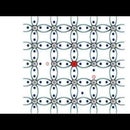Introduction: How to Prevent LED From Burning?
Before we say how to prevent LED from burning, we have to say what LED is.
LEDstands for light emitting diode, is a semiconductor device that emits visible light of a certain color when current flows through it and is fundamentally different from conventional light sources such as incandescent, fluorescent, and gas-discharge lamps. It is made from a very thin layer of fairly heavily doped semiconductor material.
Step 1: History of LED
Semiconductors
Semiconductors are the materials which have a conductivity between conductors and insulators such as germanium or silicon.
Holes (are the positively charged electric charge carrier) and electrons (are the negatively charged particles) are the types of charge carriers accountable for the flow of current in semiconductors.
Types of Semiconductors
- An intrinsic semiconductor material is made up of only a single type of element such as silicon.
- An extrinsic semiconductor is a semiconductor doped by a specific impurity (Impure semiconductor) which is able to modify its electrical properties. The process of adding impurity atoms to the pure semiconductor is called Doping.
Extrinsic Semiconductor
Extrinsic semiconductor can be further classified into:
- N-type Semiconductor: When a pure semiconductor such as (Silicon) is doped with a pentavalent impurity (P, As). The electrons in the n-type semiconductor are majority carriers and holes are minority carriers.
- P-type Semiconductor: When a pure semiconductor such as (silicon) is doped with a trivalent impurity (B, Al). The holes in the p-type semiconductor are majority carriers and electrons are minority carriers.
P-N Junction
A p-n junction is a boundary between thep-type semiconductor ( has an excess of holes) and the n-type semiconductor (has an excess of electrons). Depletion Region acts like a wall between p-type and n-type and prevents further flow of free electrons and holes.
Diode
Semiconductor diode is one of the applications of Semiconductors, is a two-terminal devices that consists of a p-n junction and metallic contacts at their two ends and has a low resistance to the flow of current in one direction.
LED is one of the applications of Semiconductor Diode.
For more information, visit our article about semiconductors.
Step 2: LED Current Limiting Resistors
How to Prevent LED From Burning?
Connecting an LED directly to a power source can cause an LED toburn out. We have to connect a resistor in series between led and voltage source, This resistor called a ballast resistor and the ballast resistor is used to limit the current through the LED and to prevent that it burns.
If the voltage source is equal to the voltage drop of the LED, no resistor is required.
The resistance of the ballast resistor is easy to calculate with Ohm’s law and Kirchhoff’s circuit laws. The rated LED voltage is subtracted from the voltage source, and then divided by the desired LED operating current.
Step 3: Analysis (LED Circuit With Resistor 1 Ohm)
When we connect a resistor which has a value equal 1 ohm in series between led and voltage source, we notice that the current flows in a circuit with value equal 808 mA(this value is too large, can cause an LED to burn out and absolute maximum current through the LED is 20 mA).
We have to reduce the value of current that flows in a circuit and the LED voltage by changing the resistance value until we reach the value of resistor that make a current that flows in a circuit 20 mA.
Step 4: Analysis (changing the Resistance Value)
- When we change the resistance value from 1 ohm to 200 ohm, we notice: The Current flows in a circuit is 33.8 mA. The Voltage across the led is 2.18 V.
We have to increase the value of resistance until we reach the value of resistor that make a current that flows in a circuit 20 mA.
- When we change the resistance value from 200 ohm to 300 ohm, we notice: The Current flows in a circuit is 22.9 mA. The Voltage across the led is 2.10 V.
- When we change the resistance value from 300 ohm to 345 ohm, we notice: The Current flows in a circuit is 20.0 mA. The Voltage across the led is 2.08 V.
Now we know the limit of a ballast resistor (R>=345 Ohm) that we need to limit the current through the LED and to prevent that it burns.
Step 5: Circuit Animations
we notice from circuit animations that
when we increase the value of a ballast resistor, the current speed is decrease because a ballast resistor is used to limit the current through the LED and to prevent that it burns.
Thanks for reading.











